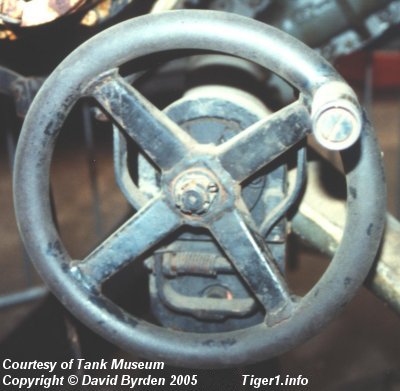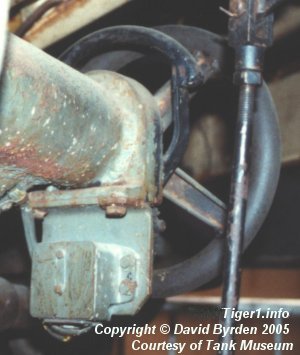About this detail of the Tiger
The gunner in a Tiger 1 was seated in the front left of the turret. On his right was the elevation handwheel and the firing trigger. They were both attached to the bridge.

This photo shows the gunner's view of the controls.
The handwheel was connected by a shaft to the elevation gearbox on the right side of the turret. This shaft was within the larger tube of the 'bridge'.
The elevation wheel had no lock. Maximum elevation was 11 degrees and maximum depression was 4 degrees (limited by the water cans on the floor). One turn of the hand wheel moved the gun by almost 1 degree [4] .
The trigger was designed to be easily used while elevating the gun. It was a standard German design; an electric primer switch, powered by the tank's main 12V batteries [4] .
By pulling a curved bar adjacent to the top of the handwheel, the gunner triggered an electric switch underneath the wheel.
There were two bump stops welded to the end of the bridge. These limited the distance of the trigger from the handwheel.

This photo shows the switch box, the trigger and the hand wheel. There is a small window on the underside of the box, and a lamp inside. I expect this lamp would illuminate when the switch was closed.
The design of the bridge was greatly simplified when the turret was redesigned. The handwheel and trigger were retained, but were mounted on an arm above the lower tube of the bridge.
[2] Survey of Tiger 250122, at Bovington museum, by David Byrden